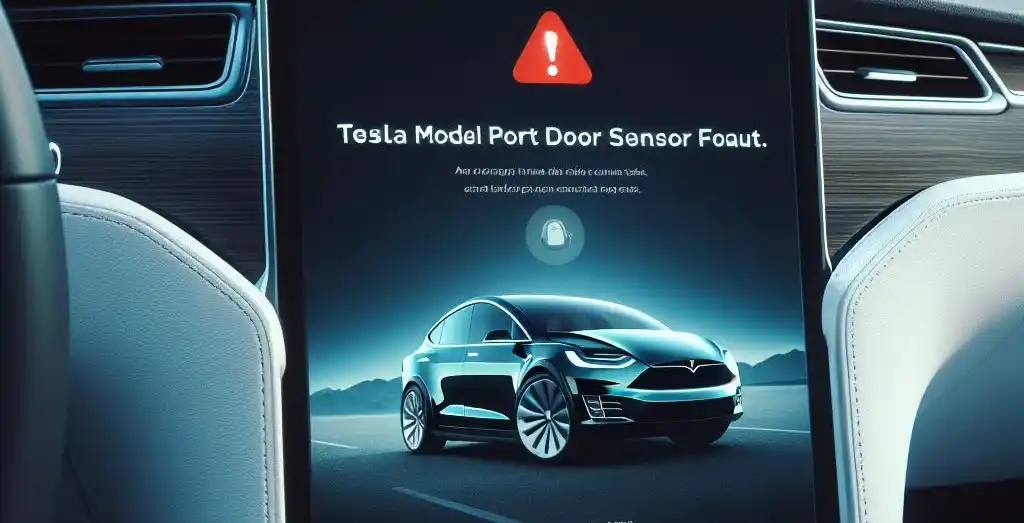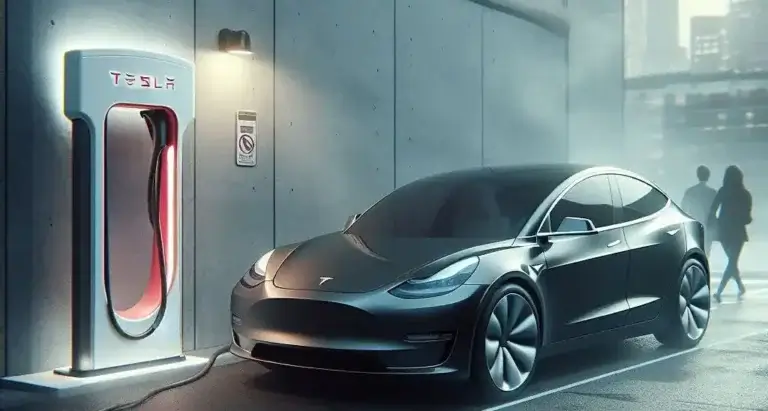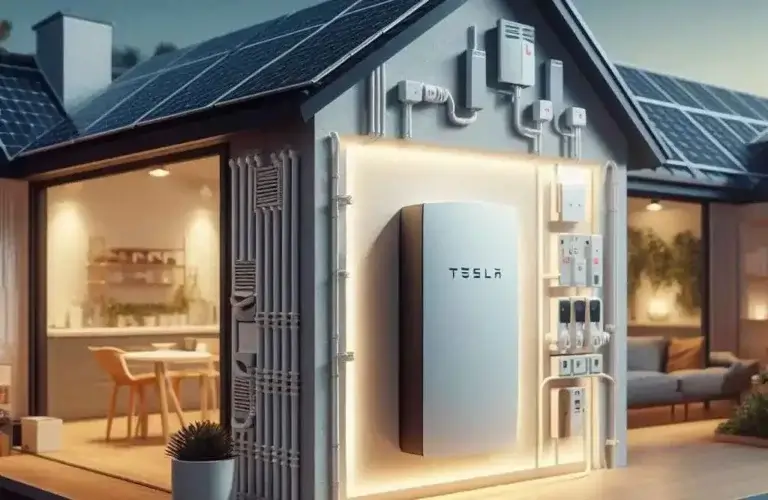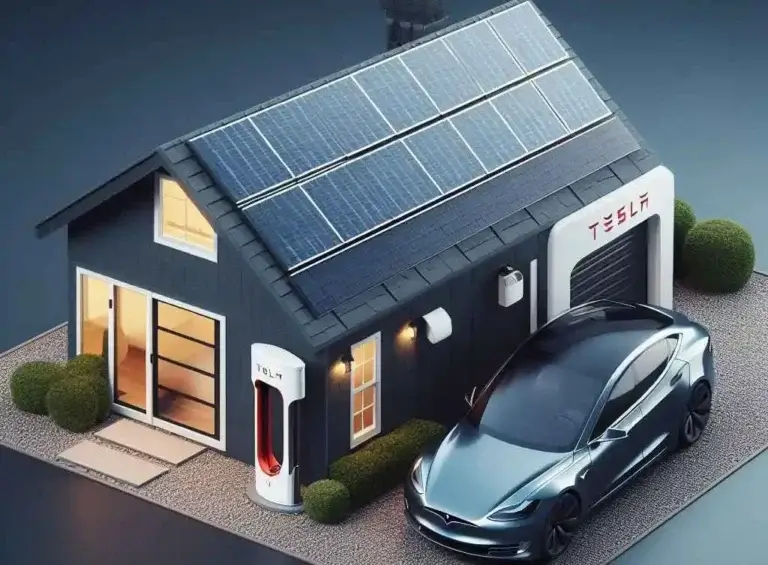Tesla Model X Charge Port Door Sensor Fault: Diagnosis, Repair and Troubleshooting Guide
Have you encountered the frustrating “Charge Port Door Sensor Fault” alert in your Tesla Model X? This issue prevents your vehicle from charging and can leave you stranded without transportation. Not to worry – this guide has everything you need to know about the Tesla Model X charge port door sensor fault and diagnose, troubleshoot, and resolve this pesky charge port door sensor fault.
Table of Contents
What Causes the Tesla Model X Charge Port Door Sensor Fault?
The charge port door sensor monitors whether the charge port door is fully closed and latched. It’s essential for safe high-voltage charging. When the sensor detects that the door is open, it interrupts external charging to avoid electric shock hazards.
A fault with this sensor triggers alert CP_w043 “Charge Port Door Sensor Fault” and prevents charging entirely. The underlying causes include:
- Loose or damaged charge port door sensor
- Faulty sensor wiring and connectors
- Charge port door alignment, loose hinges, or damage
- Debris, corrosion, or water intrusion affecting sensor operation
- Software bugs or calibration issues
Without a properly working charge port door sensor, the high-voltage battery cannot charge safely. Let’s explore the troubleshooting and repair options.
Troubleshooting the Tesla Charge Port Door Sensor
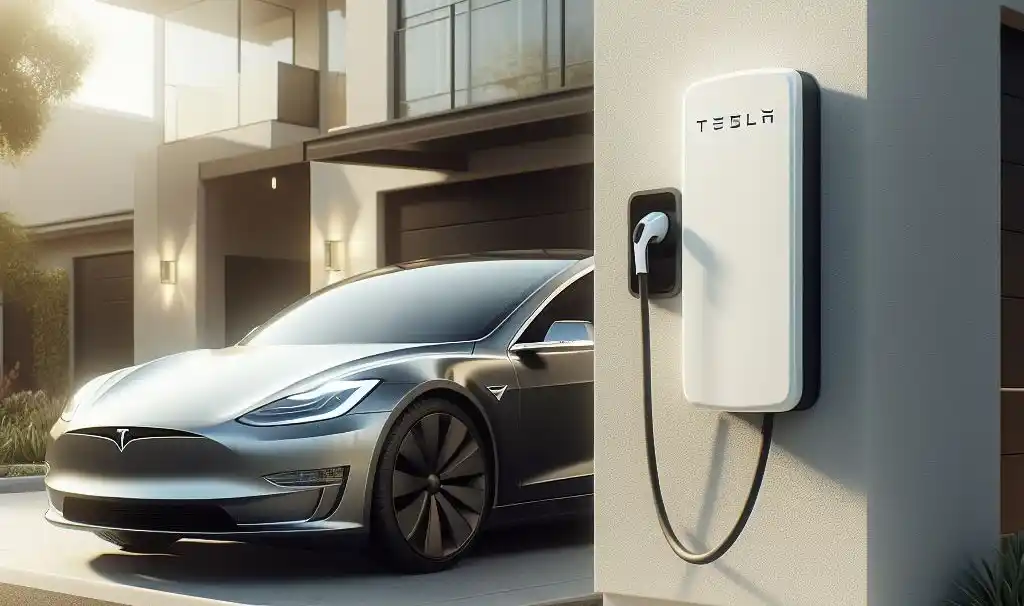
Before rushing into repairs, systematically troubleshoot the fault:
Inspect the Charge Port for Debris, Damage, and Corrosion
- Carefully examine the entire charge port assembly for any debris, contamination, or corrosion that could affect the door sensor.
- Check that the charge port door hinges operate smoothly without binding.
- Confirm that the door latches completely when closed.
- Look for any signs of water intrusion or physical damage around the port.
Reset the Charge Port and Retry Charging
Reset the charge port by:
- Issuing a “Release Charge Port Latch” command from the touchscreen service menu.
- Manually unlatch the charge port using the interior release cable.
Then reconnect the charging connector and see if the fault persists. Sometimes, resetting can clear temporary software glitches.
Try Different Charging Equipment
The sensor fault could stem from incompatible or malfunctioning charging equipment rather than the vehicle itself.
- Verify that nearby superchargers can charge the vehicle without issues.
- Try charging with different external EVSE units – either a Mobile Connector or a third-party charger.
If the vehicle charges correctly from some equipment but not others, the external EVSE likely has a problem.
Check for Related Alerts and Codes
- Scan for other charge port-related alerts that could point to a common underlying cause.
- Inspect the Diagnostic Trouble Codes (DTCs) for additional clues, if any.
- Look for alerts indicating faults with other sensors that interact with the charge port door.
Related alerts include “Service High Voltage Charging System”, “Charge Port Latch Fault” and various messages about the external charging equipment.
Schedule a Mobile Repair or Service Center Appointment
If you’ve methodically tried the above steps without resolving the fault, it’s time to contact Tesla.
- Open the Tesla mobile app and schedule a “Charge port sensor fault” service visit.
- Tesla mobile technicians can replace sensors and troubleshoot issues at your home or office.
- For extensive repairs, the service center may be better equipped.
Systematically troubleshooting before service minimizes costs and saves everyone time. Now let’s explore the repair options for a confirmed charge port door sensor fault.
Repairing the Tesla Charge Port Door Sensor

Once diagnosed, the faulty charge port door sensor typically requires replacement to restore normal charging. Options include:
Tesla Mobile Service
Tesla dispatched mobile technicians can replace the charge port door sensor at your location, without traveling to a service center. This convenient in-person service has several benefits:
- Fast turnaround – appointments often available within days
- No transportation required – comes to your home or office
- Certified Tesla technicians perform high-quality work
- Typically cheaper than service center visits
Downsides: The schedule depends on regional mobile tech availability. Component replacement only – no complex repairs.
Tesla Service Center Repair
For extensive issues requiring disassembly or calibration, the service center may be necessary. Benefits include:
- Can fully disassemble charge port for internal inspection and cleaning
- A wider range of repair capabilities – complex and multiple issues
- May resolve software and calibration problems
Downsides: Wait times for appointments can stretch into weeks. Requires transporting your vehicle to the service center. Much more expensive labor rates.
DIY Charge Port Sensor Replacement
With mechanical skill and caution, it is possible for owners to replace the charge port door sensor themselves:
- Purchase the replacement sensor module from Tesla – around $140
- Carefully remove trim pieces to access the sensor mounting
- Disconnect sensor module wiring connector
- Install new sensor and reassemble charge port components
Cautions: Requires mechanical competence, trim removal skill, and electrical precaution. Voids warranty coverage. Still requires calibration by Tesla.
While DIY sensor replacement is possible and cheaper, we recommend pursuing professional repair options first unless you’re very technically inclined.
Common Charge Port Door Sensor Error Codes
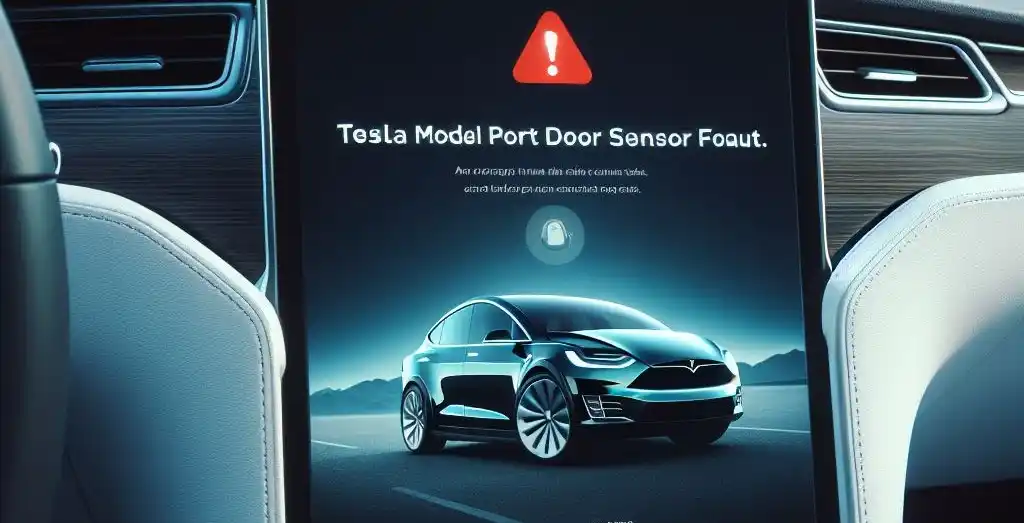
Here are some of the most common charge port door sensor fault error codes displayed by Tesla Model X vehicles:
- CP_a004 – Charge port door sensor fault. The vehicle cannot sense if the charge port door is open or closed. This will prevent charging until fixed.
- CP_a017 – Charge port latch fault. The latch keeping the charge port door closed may be malfunctioning.
- CP_w003 – Fasten the seatbelt and close the door to stay in gear. Reminds you to close the charge port door before driving off.
- CP_w043 – Charge port door open. Indicates the sensor detects the door is still open even though the vehicle is locked.
If you get any of these charge port alerts, it’s typically due to an issue with the charge port door sensor rather than faults with the charge port latch or door alignment.
Is the Charge Port Sensor Fault Covered Under Warranty?
You’re likely wondering – will the Tesla warranty cover a faulty charge port door sensor? The answer depends on your vehicle’s:
Age and Mileage
Tesla’s 4-year, 50,000-mile New Vehicle Limited Warranty generally covers defects in parts, components, and workmanship. If your car falls within the age and mileage terms, sensor faults are usually warranty-eligible.
External Factors
The warranty does NOT cover damage caused by external factors like an accident, improper use, modifications, water incursion, or lack of maintenance. If your sensor stops working due to contamination, corrosion, or physical harm, you will need to pay repair costs.
Location and Repair Type
Finally, warranty coverage varies between mobile service and service centers. Some repairs need to be performed within service centers to qualify for free replacement parts under warranty.
To conclusively determine if your charge port sensor fault qualifies for Tesla warranty coverage:
- Schedule service through your Tesla mobile app
- Explain symptoms and provide history to the service team
- Tesla will confirm if your vehicle and fault meet warranty eligibility
How Much Does Charge Port Sensor Repair Cost?
If the fault is not covered under Tesla’s factory warranty, you will need to pay parts and labor costs. Typical charge port door sensor repair bills range from $200 to $600+, depending on a few variables:
- Sensor Part Cost – Around $140 list price
- Source and Type of Labor – Hourly service center rates exceed mobile tech
- Shop Fees – Some shops charge inspection, disposal, or diagnostic fees
- Other Parts Required – Consequential damage could add costs
- Tax and Shop Supplies – Vary by location
Again, systematically troubleshooting DIY-style before committing to repair helps control costs. Accurately diagnosing and isolating the fault reduces shop labor time. Scheduling mobile service also keeps repair costs lower than the service center.
Can I Drive With a Charge Port Sensor Fault?
This critical question arises if you encounter a charge port sensor fault away from home. Can you safely drive the vehicle with this alert present?
The answer depends primarily on two factors:
Charge Level
- If your vehicle has adequate charge to reach a repair facility, cautious driving is possible.
- However, if your battery level is very low, the vehicle may enter a reduced power mode restricting speed and acceleration.
- Without the ability to charge and be stranded on the road, safety can be jeopardized.
Fault Severity
- If charging is completely disabled, cease driving immediately and call roadside assistance.
- If only some charged equipment triggers the fault, very careful travel to service may work.
- But a sensor fault suggests potential electrical hazards – safety first!
With low charge or ambiguity about fault severity, transporting the vehicle is recommended. Calling Tesla roadside assistance for a tow is the safest option. Vehicle electronics and human safety are nothing to gamble with – exercise caution.
Preventing Charge Port and Sensor Faults
A bit of preventative care reduces the chances of frustrating charge port and sensor repair bills:
- Periodically clean the charge port of dust, salt, and debris
- Avoid pouring water, beverages, or chemicals into the charge port
- Lubricate the charge port latch mechanism as needed
- Be gentle and avoid yanking cords from the port
- Avoid exposing the port to intense water pressure or car washes
- Check that the port closes, latches, and seals completely
- Confirm sensor operation by observing charge status screens
While charge port sensor faults will likely occasionally occur, following Tesla’s care and usage guidance minimizes problems.
Tesla Model X Charge Port Door Sensor Fault: Key Takeaways
Dealing with a non-functional charge port is frustrating and inconvenient. By understanding the repair process, acting promptly, and taking sensible precautions, you can get back on the road smoothly.
To recap the key points:
- The charge port door sensor fault interrupts charging and requires prompt troubleshooting
- Systematically rule out software glitches, charging equipment issues, and external contamination
- The most likely fix is replacing the failed sensor, with options being mobile service, service center visit, or DIY
- Determine warranty coverage eligibility by vehicle age, mileage, damage caused, and repair type
- Typical out-of-warranty repair costs range from $200 to $600+ parts and labor
- Exercise extreme caution driving with this fault – safety first
- Prevent problems by regularly cleaning the charge port and inspecting for damage
Frequently Asked Questions
What’s the average cost to replace a Tesla charge port sensor?
Expect to pay $200 to $600+ for sensor replacement from mobile service, averaging higher at service centers. DIY parts cost around $140.
Can I drive with a charge port sensor fault?
Proceed very cautiously only if the charge level is adequate to reach service and fault permits. Otherwise, cease driving and transport the vehicle.
Why does my Tesla sometimes show charge port sensor alerts despite working normally?
Intermittent faults can stem from temporary software glitches, loose connectors, or contamination. Try cleaning the port and retry charging before servicing.
Is water damage to the charge port sensor covered under warranty?
External water incursion usually voids Tesla’s Electrical and Powertrain warranties related to charging system damage. Protection plans may offset costs.
By understanding the diagnosis, repair, and prevention best practices for Tesla charge port sensor faults, you can minimize disruptions and safety risks. Mastering these technical issues is key to reliable and stress-free electric vehicle ownership.
Conclusion
Dealing with annoying and confusing “charge port door sensor fault” alerts while trying to charge your Tesla Model X can be frustrating. But in most cases, this charging issue can be resolved quickly once the exact cause is identified – provided you follow proper troubleshooting and repair procedures.
As covered in this guide, a fault in the Model X charge port door magnetic sensor is the most common culprit for such error messages. Following some DIY troubleshooting advice may help you get your Tesla charging again without needing professional repair.
But for more stubborn or complex cases of charge port problems, Tesla’s mobile service teams and service center technicians have the experience needed to accurately diagnose issues and replace any malfunctioning parts in the Model X charge port assembly.
Overall, a faulty charge port door sensor doesn’t have to mean the end of reliable fast charging for your electric vehicle. This guide will help you explore all available fixes to resume convenient home, destination, and DC fast charging once again.

